Spotlight on Nick Adams
Mar 22, 2014
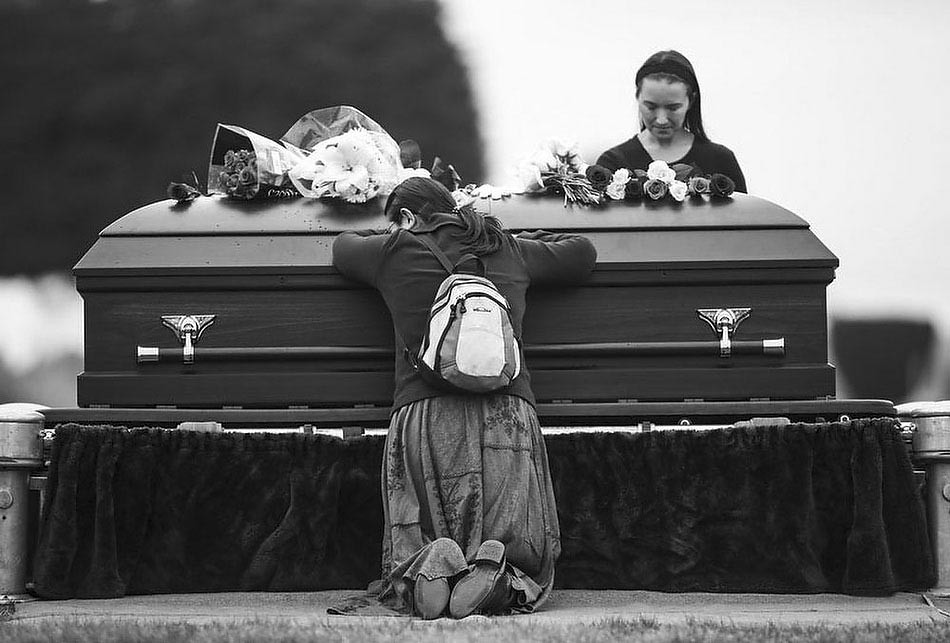
TID:
This is a strikingly moving image, please tell us a little of the backstory of the image.
NICK:
Thank you for having me on the blog. This was one of the last frames I made during my coverage of the murder of beloved Catholic priest Father Eric Freed. I had photographed Laura Martinez since the tragic event occurred and I interviewed her for a video I was making.
Six days earlier I was spending time with my wife on New Year's Day when I heard about a developing fatal crime scene at St. Bernard Church. I just had a feeling that this would be a big story, one that would end up impacting the community in a very poignant way, so I went to see what was going on.
After being on the scene for a few hours I learned that the victim was most likely the priest of the church. During the press conference, church members had gathered to hear what had happened. The police chief announced that someone had been murdered and the mayor identified the victim as Father Freed. Everyone collectively gasped and comforted each other.
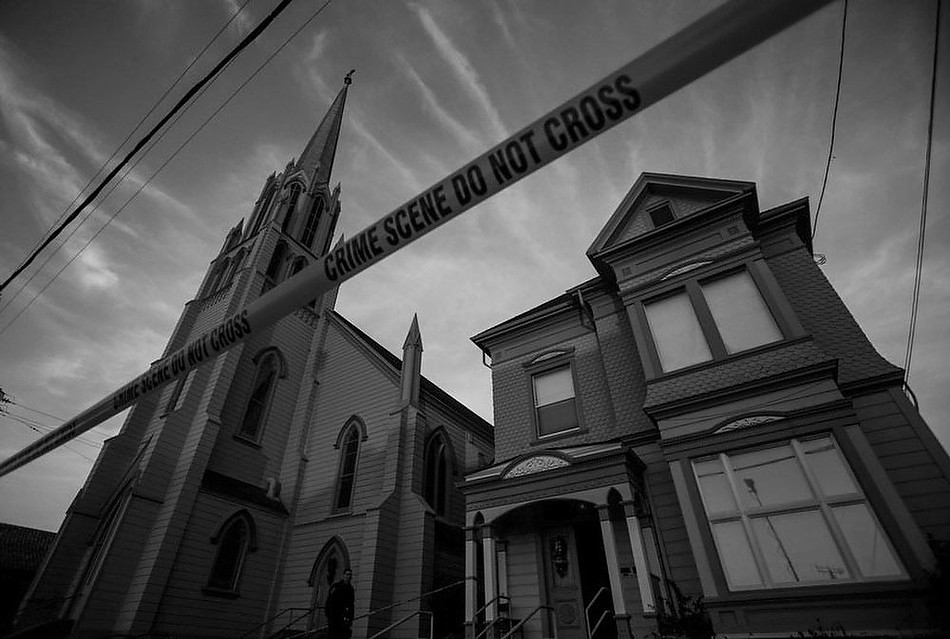
TID:
How did you prepare for making this image and since this is part of a series of images, can you speak to how you worked to gain access and trust from the community?
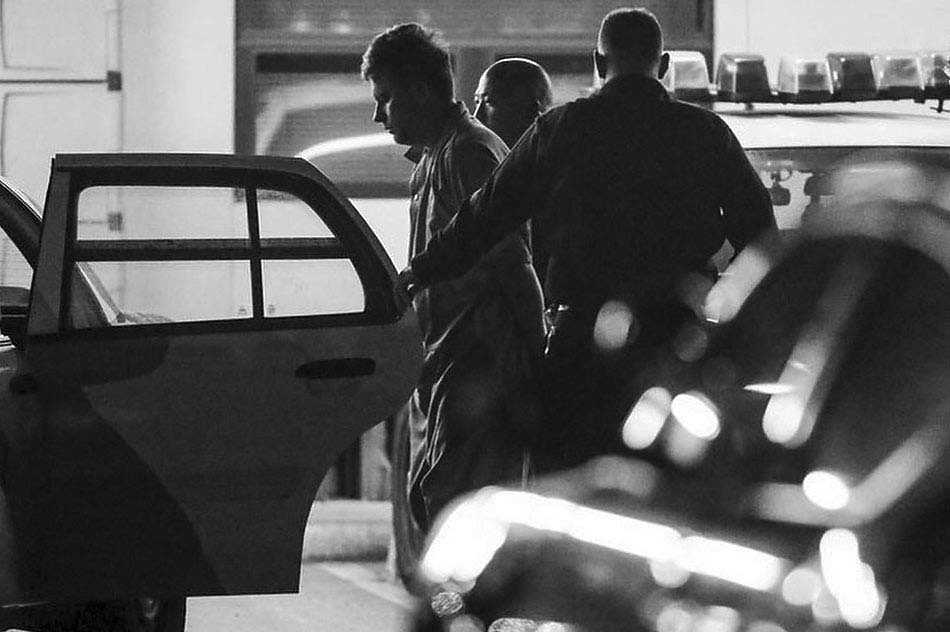
NICK:
I was there from day one talking with community members and making photos. I made sure to spread my coverage on social media, as well as send photos to St. Bernard’s Parish leaders, so people could see the type of photos I was making. When they did they thanked me for being there and knew my coverage to be respectful to the situation.
At the same time, I was truly heartbroken for my community. I kept thinking about how it would feel to have the man that you trusted with your spiritual soul, confessed your sins, married you to your spouse, or baptized your child, to be taken away in such a violent manner. I felt that I could understand that grief. My goal was to make beautifully sad images that would reflect the pain of the loss and show the love for Father Freed.
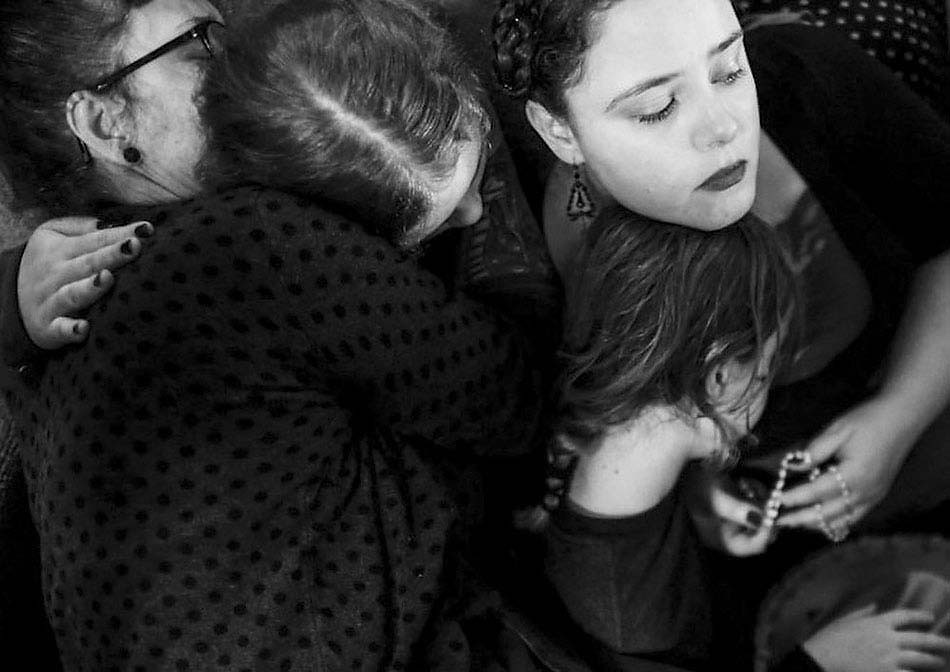
TID:
What challenges did you encounter while working to make this image?
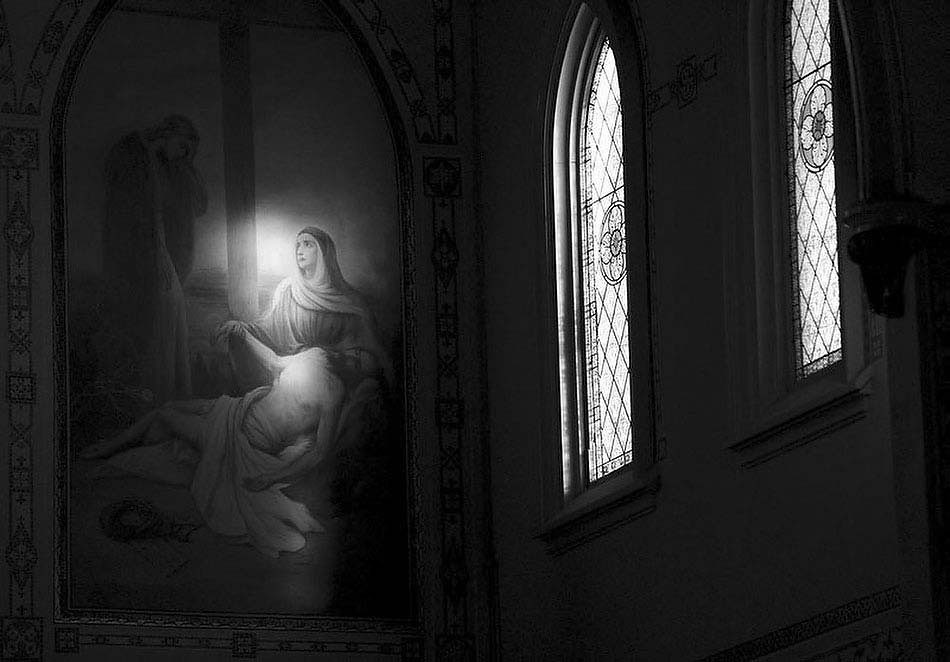
NICK:
Almost not seeing it. I was about to leave when I saw the image, most people gone home after saying their final goodbyes. The only people still there were the cemetery crews, a very small group of mourners, and myself. I started to head toward my car when I noticed Laura Martinez at the coffin praying.
TID:
How did you handle and overcome these problems?
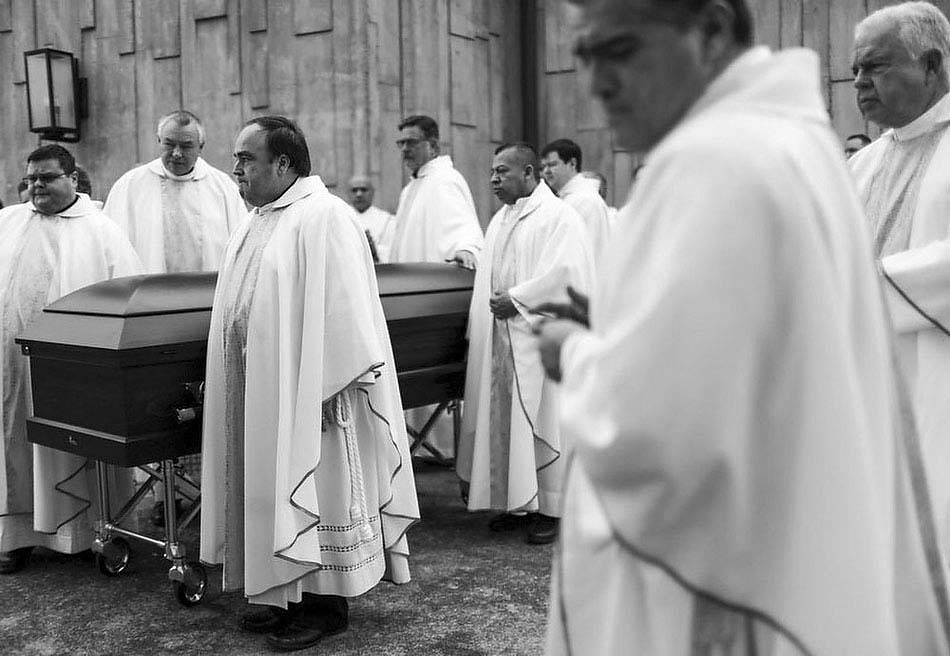
NICK:
My main issue was trying to be as respectful as possible to this community that was in mourning. We walk such a fine line with access and respect when in these types of moments; raising the camera at the wrong time can do so much to ruin your overall coverage. To do this I tried to work the rooms quietly, to respect those that did not want to be photographed, and to back out of people’s personal space. Talking with the people involved in the stories I’m trying to cover before starting to photograph has helped me know how far to go. In this instance, I went to the church mass without my cameras prior to the overnight vigil and funeral to speak with members of the community and get a sense of what would be appropriate.
TID:
Now, onto the moment. Can you talk about the moments leading up to the picture and also the actual moment.
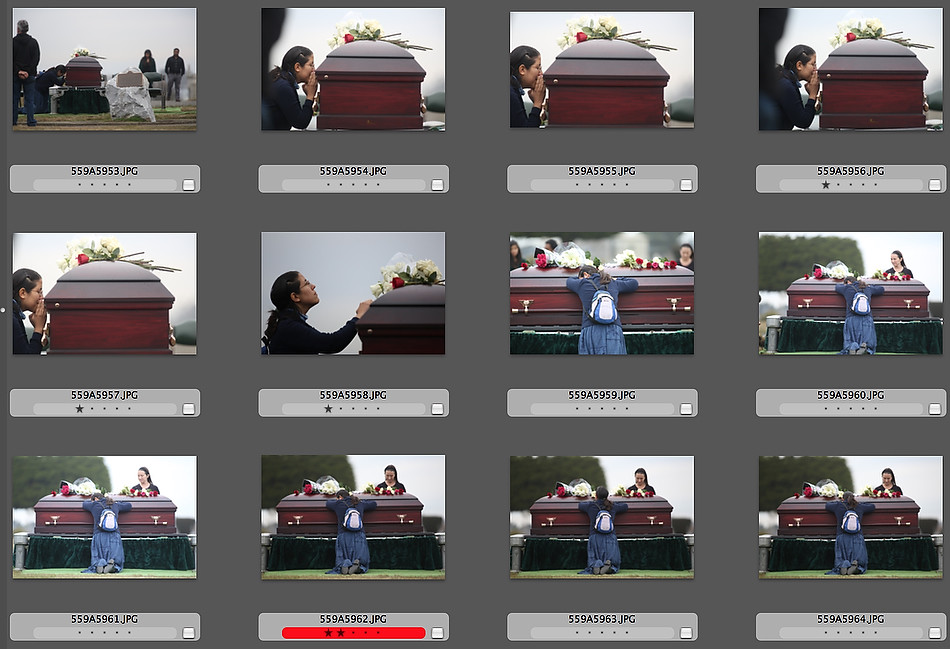
NICK:
I knew the route that the funeral procession was taking to the cemetery I made my way to arrive before anyone else. The actual burial location was on a hill and so I tried to figure out if I could make any clean images from the bottom but quickly noticed that vehicles would block a shot. As people gathered, I mainly hung in the back shooting with my 300mm as the family had requested during the funeral not to be photographed. I wasn’t really sure what to expect at the graveside service. Three white doves were released. Each person took their own amount of time at the side of the coffin reflecting and placing a single rose on the casket. I was just starting to head back to my car when I noticed Laura Martinez praying at the coffin.
TID:
What surprised you about the moment?
NICK:
How quiet the moment was and long she prayed at the side of the coffin.
TID:
What have you learned about yourself in the process of making images like this?

NICK:
I’ve learned when to put the camera down and to just observe the situation. Sometimes you get so caught up in making a particular frame that you lose the overall importance of the event or situation. Also, I’ve learned how important it is to embrace the feelings created by what you are covering. The emotions of the parishioners that I was allowed to witness really helped to direct my focus. Finally, after Father Freed's funeral I started to use the silent mode more and more, limiting the amount of images I can take in a second. This has helped me refine my image making to just a few frames of a scene really waiting for the right moment to make the image.
TID:
What have you learned about others?
NICK:
That in times of sorrow people look for the light. People are very willing to let you into their lives if they trust you.
TID:
In conclusion, what advice do you have for photographers?
NICK:
To always try to set out with a goal. My goal with the images of Father Freed was to show the amount of love that the community had for this man.
:::BIO:::
Nick Adams grew up in Nederland, Texas, and has been working as a photojournalist since high school. He attended Western Kentucky University. He has worked at various daily newspapers around the country, including time as the photo editor at the The Register-Mail in Galesburg, Ill, where he was named NPPA's Region 5 Photographer of the Year. His work has been featured in American Photography 29. He has worked for Reuters, Education Week, and USA Today.
He is freelancing behind the redwood curtain in Humboldt County expecting their first child with his wife and three cats.